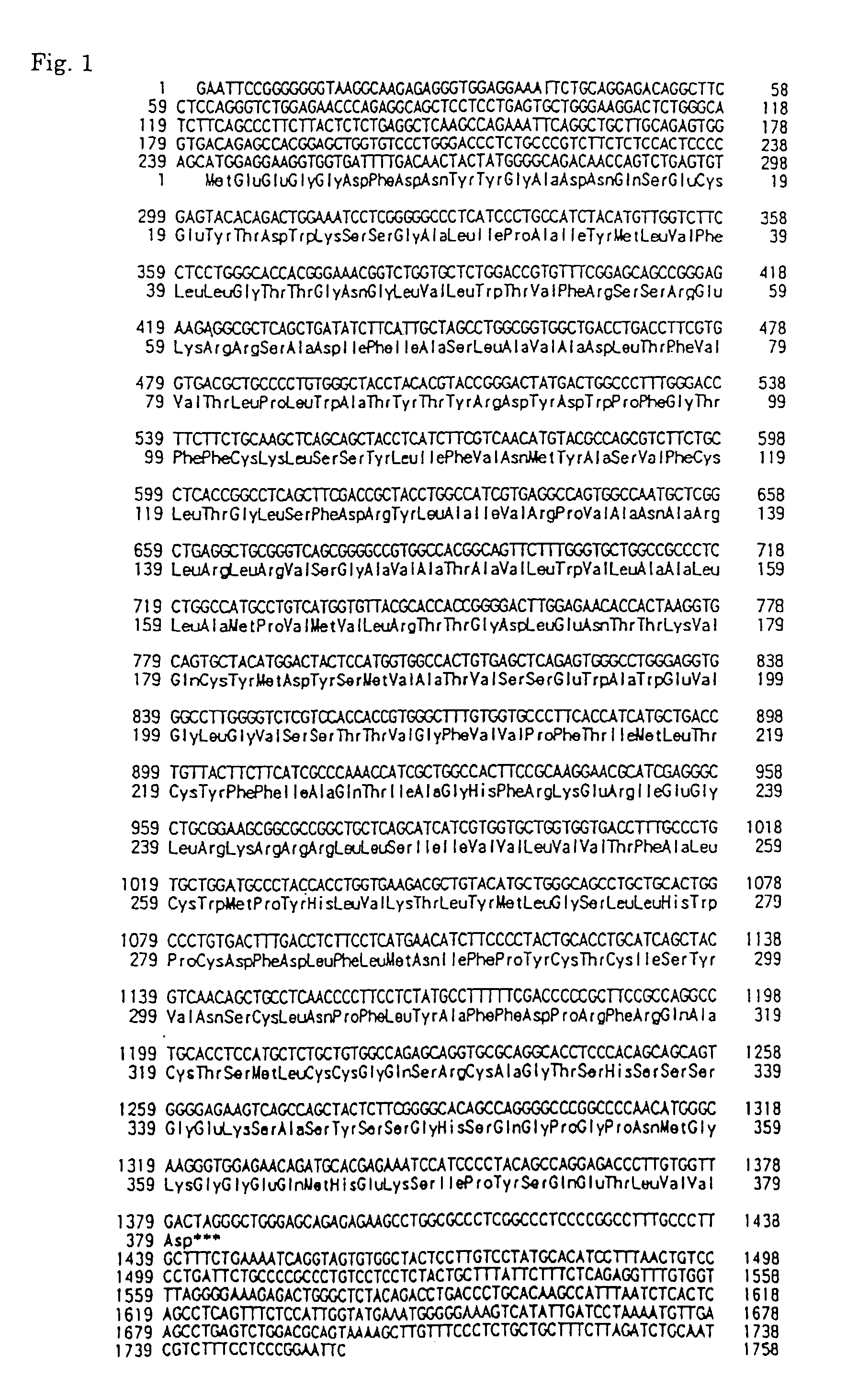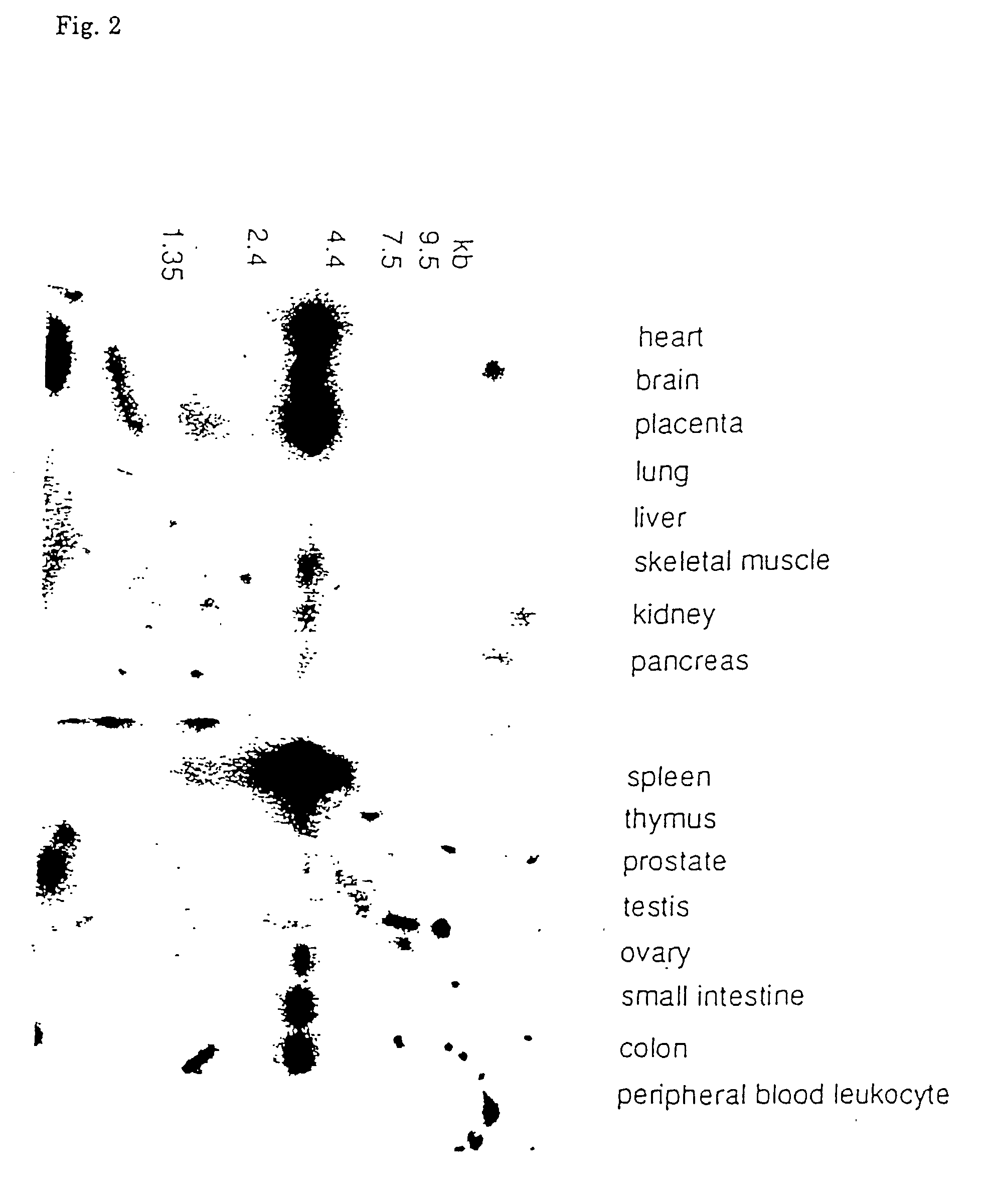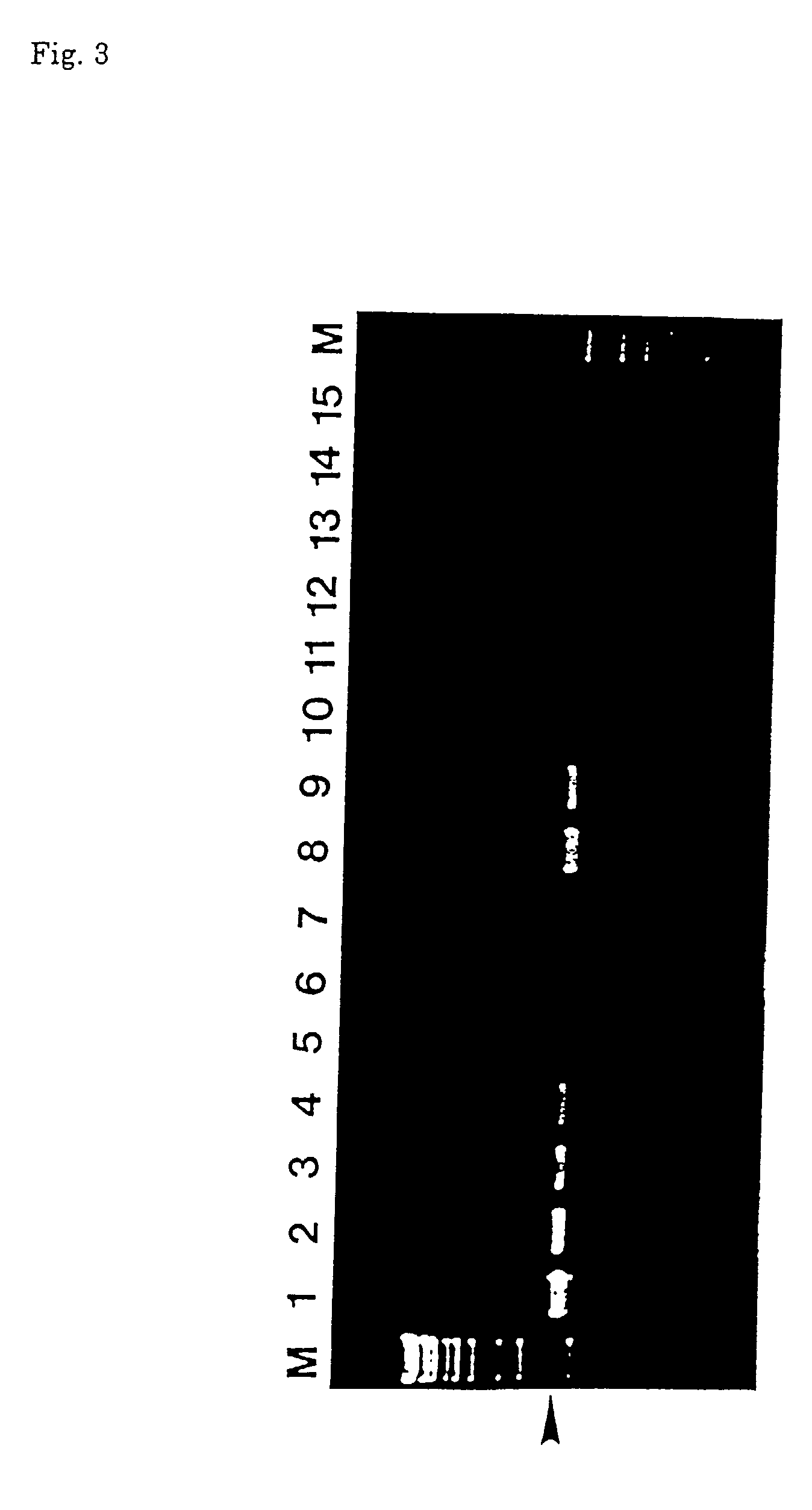Polypeptides, their production and use
a polypeptide and polypeptide technology, applied in the field of polypeptides, their production and use, can solve the problems of difficult to estimate the ligand based on the similarity in primary structure alone, difficult to predict the ligand , the structure and function of the polypeptide have not been elucidated
- Summary
- Abstract
- Description
- Claims
- Application Information
AI Technical Summary
Benefits of technology
Problems solved by technology
Method used
Image
Examples
reference example 1
Production of Synthetic DNA Primers for Amplifying a DNA Coding for the G Protein-Coupled Receptor Protein
[0355] The nucleotide sequences of the cDNAs respectively coding for amino acid sequences in the vicinity of the first transmembrane domain of known human-derived TRH receptor protein (HTRHR), human-derived RANTES receptor protein (L10918, HUMRANTES), human Burkitt's lymphoma-derived unknown-ligand receptor protein (X68149, HSBLRIA), human-derived somatostatin receptor protein (L14856, HUMSOMAT), rat-derived .mu.-opioid receptor protein (U02083, RNU02083), rat-derived .kappa.-opioid receptor protein (U00442, U00442), human-derived neuromedin B receptor protein (M73482, HUMNMBR), human-derived muscarinergic acetylcholine receptor protein (X15266, HSHM4), rat-derived adrenaline .alpha. 1B receptor protein (L08609, RATAADRE01), human-derived somatostatin 3 receptor protein (M96738, HUMSSTR3X), human-derived C5a receptor protein (HUMC5AAR), human-derived unknown-ligand receptor prot...
example 1
Amplification of G Protein-Coupled Receptor Protein cDNA by PCR Using Human Amygdala-Derived cDNA
[0361] Using human amygdala-derived cDNA (QuickClone, Clontech) as the template, amplification was carried out by the PCR technique using the DNA primers synthesized in Reference Example 1. The composition of the reaction mixture was as follows: synthetic DNA primers (sequences: 5' primer sequence and 3' primer sequence) 1 .mu.M each, template cDNA 1 ng, 0.25 mM dNTPs, Taq DNA polymerase 1 .mu.l and buffer attached to the enzyme, the total reaction mixture volume being 100 .mu.l. Amplification was carried out using Thermal Cycler (Perkin Elmer) in 30 cycles each comprising 30 seconds at 96.degree. C., 1 minute at 45.degree. C., and 3 minutes at 60.degree. C. Prior to addition of Taq DNA polymerase, the remaining components of the reaction mixture were mixed up and heated at 95.degree. C. for 5 minutes and at 65.degree. C. for 5 minutes. Amplification product confirmation was performed by...
example 2
Cloning of a cDNA Containing the Full-Length Coding Region of the Receptor Protein from a Human Amygdala-Derived cDNA Library
[0365] For obtaining a DNA coding for the full-length APJ receptor, a human amygdala-derived cDNA library was screened using the APJ receptor cDNA fragment obtained in Example 1 as a probe. The human amygdala-derived cDNA library used was Clontech's library (Clontech, CLHL30086) in which the .lambda. gt11 phage vector is used. An amount of the human amygdala cDNA library corresponding to 2.times.10.sup.6 pfu (plaque-forming units) was admixed with magnesium sulfate-treated Escherichia coli Y1090. After 15 minutes of incubation at 37.degree. C., 0.5% agarose (Pharmacia) LB was added, and 1.5% agar (Wako Pure Chemical) LB plates (containing 50 .mu.g / ml ampicillin) were seeded with the resulting mixture. After overnight culture at 42.degree. C., a nitrocellulose filter was placed on each plate with plaques formed thereon, for plaque transfer onto the filter. This...
PUM
| Property | Measurement | Unit |
|---|---|---|
| molecular mass | aaaaa | aaaaa |
| molecular mass | aaaaa | aaaaa |
| molecular mass | aaaaa | aaaaa |
Abstract
Description
Claims
Application Information
 Login to View More
Login to View More - R&D
- Intellectual Property
- Life Sciences
- Materials
- Tech Scout
- Unparalleled Data Quality
- Higher Quality Content
- 60% Fewer Hallucinations
Browse by: Latest US Patents, China's latest patents, Technical Efficacy Thesaurus, Application Domain, Technology Topic, Popular Technical Reports.
© 2025 PatSnap. All rights reserved.Legal|Privacy policy|Modern Slavery Act Transparency Statement|Sitemap|About US| Contact US: help@patsnap.com



